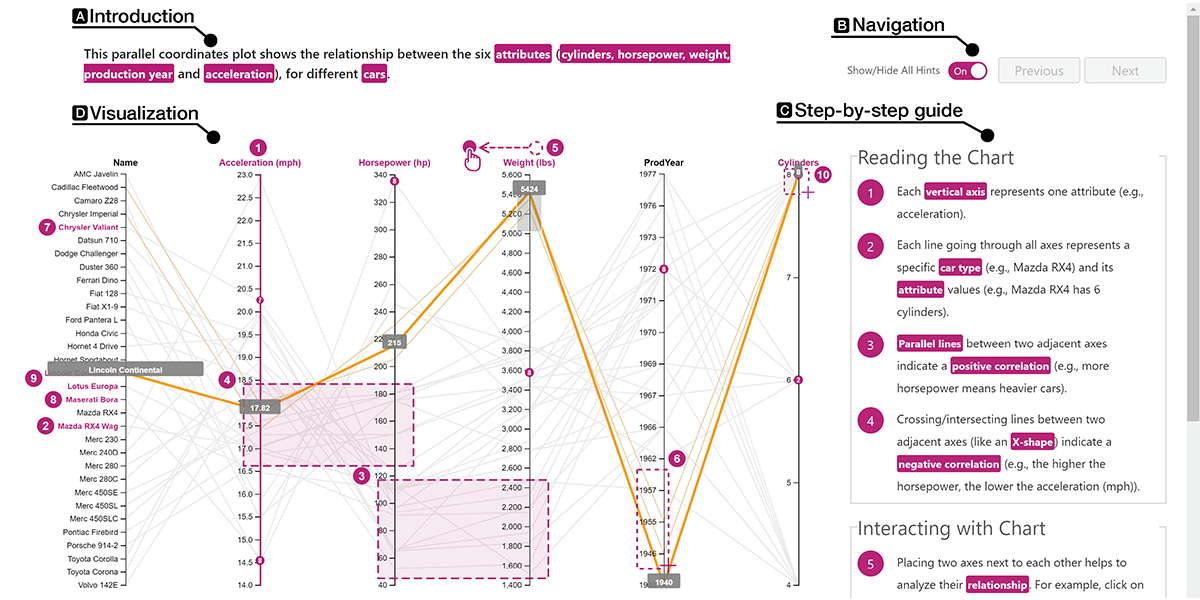
Abstract
Comprehending and exploring large and complex data is becoming increasingly important for a diverse population of users in a wide range of application domains. Visualization has proven to be well-suited in supporting this endeavor by tapping into the power of human visual perception. However, non-experts in the field of visual analysis often have difficulties in correctly reading and interpreting information from novel visualization idioms. Visualization onboarding can support novices in learning how to use new digital technologies. Therefore, we developed an interactive step-by-step guide and applied the method to four visualization techniques—a bar chart, a horizon graph, a change matrix, and a parallel coordinates plot. Results using Amazon Mechanical Turk workers show that there is a need for onboarding, especially for more complex visualization techniques. We further investigated the perception and rating of a scrollytelling and a video tutorial for the most unfamiliar visualization—the parallel coordinates plot. A comparison between the three onboarding methods indicates that participants appreciated the easy-to-understand examples, the precise wording of the onboarding messages in a step-by-step manner, and the introduction of interaction concepts by highlighting the most relevant information over all onboarding methods. The video tutorial supported the introduction of unknown interaction techniques best.
Citation
Christina Stoiber,
Conny
Walchshofer,
Florian Grassinger,
Holger
Stitz,
Marc
Streit,
Wolfgang Aigner
Design and Comparative Evaluation of Visualization Onboarding Methods
Proceedings of the Symposium on Visual Information Communication and Interaction (VINCI ’21),
doi:10.1145/3481549.3481558, 2021.
BibTeX
@inproceedings{,
title = {Design and Comparative Evaluation of Visualization Onboarding Methods},
author = {Christina Stoiber and Conny Walchshofer and Florian Grassinger and Holger Stitz and Marc Streit and Wolfgang Aigner},
booktitle = {Proceedings of the Symposium on Visual Information Communication and Interaction (VINCI ’21)},
publisher = {Association for Computing Machinery},
address = {New York, NY, USA},
doi = {10.1145/3481549.3481558},
year = {2021}
}
Acknowledgements
This work was funded by the Austrian Science Fund as part of the VisOnFire project (FWF P27975-NBL), the Austrian Ministry for Transport, Innovation and Technology (BMVIT) under the ICT of the Future program via the SEVA project (no. 874018), as well as the FFG, Contract No. 881844: “Pro2Future is funded within the Austrian COMET Program Competence Centers for Excellent Technologies under the auspices of the Austrian Federal Ministry for Climate Action, Environment, Energy, Mobility, Innovation and Technology, the Austrian Federal Ministry for Digital and Economic Affairs and of the Provinces of Upper Austria and Styria. COMET is managed by the Austrian Research Promotion Agency FFG.”



